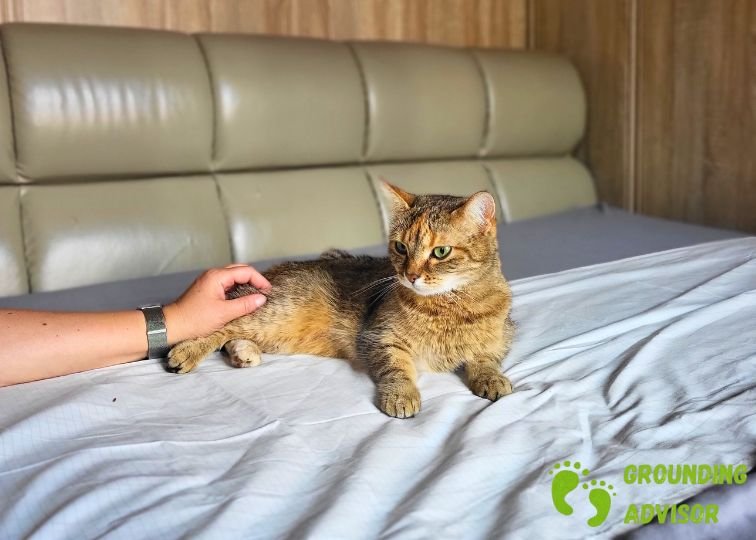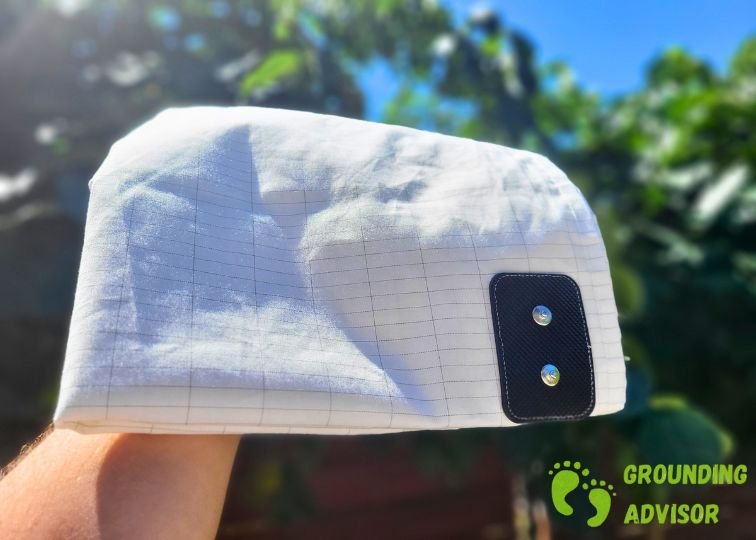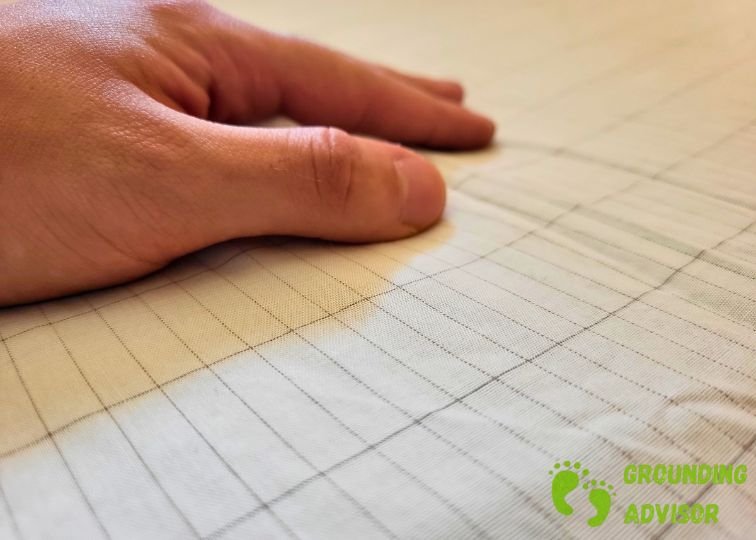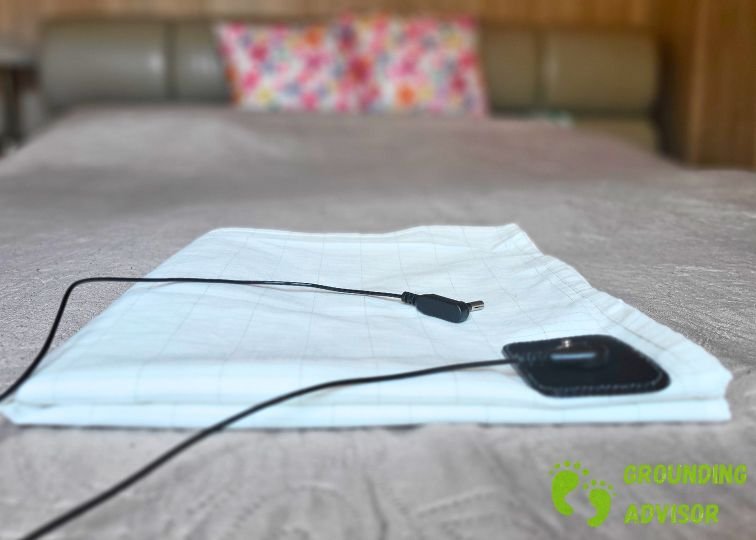Grounding sheets, earthing, connecting with the planet while you sleep – it all sounds pretty intriguing. But beyond the concept, there’s that practical little question that often pops up: “Okay, so how do I actually use one of these things?”
If you’re wondering about the nuts and bolts of getting started with a grounding sheet, you’ve landed in the perfect spot. It turns out, it’s far simpler than you might imagine, and I’m here to walk you through exactly how to set it up and make it a seamless part of your routine.
What Exactly is a Grounding Sheet?
Before we get into the “how-to”, let’s quickly touch on the “what”. A grounding sheet isn’t your average bed linen. It’s woven with conductive materials, often silver or carbon threads, that are designed to connect you to the Earth’s natural, gentle electrical energy.
The sheet usually comes with a cord. One end of the cord snaps onto the sheet, and the other end plugs into the ground port (that third, round hole) of a standard electrical outlet. This port connects to the ground wire in your home’s wiring, which ultimately connects to a grounding rod buried in the earth outside. So, you’re essentially creating a pathway for that natural earth energy to reach you.
What Is the Best Way to Use Grounding Sheets?
Let’s get to the practical part. Using a grounding sheet is refreshingly simple. When my first grounding sheet arrived, I half-expected something overtly technical, maybe even a faint hum when plugged in. Instead, it just looked and felt like… well, a sheet, albeit one with a rather curious little snap connector. It demystified the process right away.
Here’s how I go about it.
Placement is Key
You’ll want the grounding sheet to have direct contact with your skin. For many sheets, this means placing it directly on your mattress, under your regular fitted sheet. Some people prefer to use it as their fitted sheet, especially if it’s a full-sized grounding sheet. If you have a smaller grounding mat or pad, you might place it across the foot of the bed where your feet will rest, or under your torso.
The Connection
Locate the snap connector on your grounding sheet. Attach the provided cord to this snap. It’s usually a firm, satisfying click.
Grounding the Cord
Take the other end of the cord (the pronged end) and plug it into the ground port of a properly grounded electrical outlet. This is usually the bottom, round hole in a three-prong outlet. It is crucial that your outlet is actually grounded. Most modern homes in the U.S. have grounded outlets, but if you’re in an older home or unsure, it’s wise to use an outlet checker (a simple, inexpensive device from a hardware store) or consult an electrician. You’re not using electricity from the outlet, just its connection to the earth.
That’s pretty much it! No complicated settings, no apps to download. Just a simple, physical connection. It’s almost anticlimactic how easy it is.
Weaving it Into Your Routine: Making it Work for You
Once it’s set up, you just… live with it. I found that integrating it into my nightly routine was effortless. I make my bed, and the grounding sheet is just part of it. For someone like me, who isn’t always the best at sticking to complicated new routines, the sheer simplicity was a major plus. Making the bed is something I do anyway; incorporating the grounding sheet didn’t add an extra “to-do” to my already packed schedule. Some people also use grounding mats at their desks, placing their bare feet or wrists on them while working. The principle is the same.
Think about how much time you spend in bed. If you can make that time potentially more restful, why not explore it? It doesn’t demand any extra time from your day, which, let’s be honest, is a huge plus for most of us.
How Long Should You Lay on a Grounding Sheet?
This is a common question, and the general consensus seems to be that the longer, the better, within reason. Most people aim to sleep on their grounding sheets for the entire night, so anywhere from 6 to 8 hours, or however long you typically sleep. This extended period of contact gives your body ample time to connect.
However, even shorter periods can be used. If you like to read in bed for an hour before sleep, or meditate, that’s an hour of grounding time. Some people use grounding mats for just 30-60 minutes during the day while relaxing.
Consistency often appears to be more significant than sporadic long sessions. Like many wellness practices, it’s the regularity that seems to yield the most noticeable experiences for people. It’s not a one-time fix; it’s more like a gentle, continuous support. So, if you’re going to try it, aim for consistent nightly use to really see how you respond.
Do I Leave My Grounding Sheets Plugged in All the Time?
Yes, generally, it’s perfectly fine and often recommended to leave your grounding sheet plugged into the grounded outlet all the time. Since the sheet isn’t drawing any electrical power (it’s only using the ground connection) there’s no energy consumption to worry about.
The only common exception is during electrical storms. Just as you might unplug valuable electronics during a thunderstorm as a precaution against power surges (even though the grounding sheet isn’t “electronic” in the same way), some people prefer to unplug their grounding cords too. It’s a simple safety measure. Otherwise, keep it plugged in so it’s ready when you are.
Caring for Your Grounding Sheets
Grounding sheets are pretty low-maintenance, but a little care goes a long way in preserving their conductivity and lifespan.
- Washing: Generally, you can machine wash them in warm water with a mild liquid detergent.
- Drying: Line drying is often best, or tumble dry on a low heat setting. High heat can potentially damage the delicate conductive fibers over time.
- What to Avoid: This is important. Do not use bleach or fabric softeners. These products, along with some whitening detergents or those with oils, can tarnish the conductive material (like silver) or leave a residue that impairs conductivity. It’s like putting a film between you and the earth.
Always check the specific care instructions that come with your particular sheet, as materials can vary slightly.
A Few More Thoughts
It’s natural to have questions, maybe even a touch of skepticism. I certainly did. For instance, a big one is: will I feel a shock? The answer is a resounding no. You’re connecting to the Earth’s natural energy, not an electrical current from the outlet. It’s a very gentle, subtle connection.
Then there’s the question of what to wear. Does it matter? Well, direct skin contact is considered best for optimal connection. However, light, natural-fiber pajamas, like those made from cotton or bamboo, are usually fine. Synthetics, on the other hand, might act as a barrier and block the connection.
What if your outlets aren’t grounded? This is crucial: you really need to get them checked by an electrician. Using an ungrounded outlet means the sheet simply won’t work as intended, and safety always comes first. The entire system relies on that proper ground connection.
Some people wonder about using lotions or body oils. It’s generally best to let them absorb fully into your skin before making contact with the sheet. Heavy oils or lotions might create a barrier over time, or even affect the sheet’s conductive fibers with prolonged exposure.
And the big question: is it just a placebo? That’s an open question for science to fully answer, and research is ongoing. What I can say is that many users, myself included, report tangible benefits. Often, personal experience becomes the most convincing factor.
Oh, and a slightly more lighthearted concern I’ve heard – will your pets try to steal your spot? From what I’ve seen and heard, it’s highly probable! Animals, with their natural instincts, seem quite drawn to grounding surfaces. You might find yourself needing a bigger sheet, or perhaps getting one just for your furry companion!


Jeremiah Kowalski
I’m Jeremiah, and grounding changed my life in the best way. When I first discovered it, I had no idea how powerful simply reconnecting with the earth could be. But I also noticed that so many people were just like me at the beginning, unsure what grounding even is or how to start. That’s why I created this blog: to make grounding more approachable and practical. Product testing is a passion of mine, especially in the wellness space. I also run waterbottleadvisor.com, where I review drinkware products that support hydration and overall well-being.


![3 Best Grounding Sheets of 2025 [Personally Tested]](https://groundingadvisor.com/wp-content/uploads/2025/07/Projekt-bez-nazwy-38.jpg)
![3 Best Grounding Mats of 2025 [Personally Tested]](https://groundingadvisor.com/wp-content/uploads/2025/07/Projekt-bez-nazwy-52.jpg)

